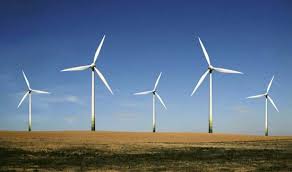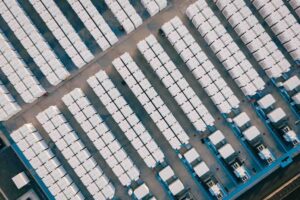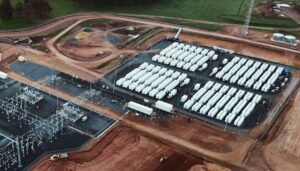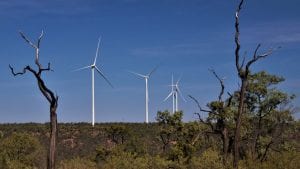The dirty war against renewables continues. As right wing politicians prepare for an anti-wind rally, network operators and generators are busy protecting their interests and painting green energy as the villain. As usual, all is not what it seems.
A case in point came when Alinta Energy announced late last week that it fired up one half of its 540MW Northern brown coal generator in Port Augusta, putting it back into production at the end of May. It didn’t miss the opportunity to take a pot-shot at wind energy, perhaps sensing the political opportunity to add to the demonisation of green energy – given what we have learned in recent months about the activities of anti-wind campaigners, and the influence which is extending into Tony Abbott’s inner circles.
Northern, along with its now mothballed partner, the Playford B power station, had enjoyed decades of largely uninterrupted business, providing highly polluting base-load power to South Australia, which supplemented its need with brown coal generation from the inter-connector to Victoria, and gas fired generation from mostly within the state.
In the last few years, all that has been turned on its head. South Australia now has around 25 per cent of its capacity and demand satisfied by wind –one of the highest percentages in the world – and the high penetration of rooftop solar is reducing demand from the grid by at least another 5 per cent, and much more in the once-profitable daytime peaks.
Generators dislike wind because of its variability, even if it is predictable. It forces base-load generators to change their levels of output or to take lower prices, or both. This is a global problem, an issue we will highlight in a separate analysis on the German energy market, which we will publish tomorrow.
Alinta, which is under intense community pressure to permanently close both Northern and Playford and replace them with what would be Australia’s first large scale solar thermal plants, wasn’t going to miss the opportunity to paint its own version of what is going on.
Northern, because of the growing impact of renewables and changing demand patterns, is operating mostly in summer months now and closing down during winter. But after being shut for several months, Alinta noted that average wholesale prices in the state had been averaging around $100/MWh, and it saw a profitable time to re-enter the market.
As it turned out, and as Alinta noted, Northern’s return to service just happened to coincide with a number of power outages and storm resulted in significant price volatility, particularly on Monday 3 June, with prices surging to as high as $12,900/MWh.
“Due to a combination of low wind, interconnection transmission outages and numerous plant reliability issues of other generators, Alinta Energy made the decision to return one of the two Northern Power Station units to service to capture the improved wholesale prices and to bolster the security of electricity supply for SA, CEO Jeff Dimery said in a statement.
“Alinta Energy has repeatedly stated that the South Australian energy market is plagued by an oversupply of expensive subsidised wind generation, which cannot be relied upon to meet demand, is undermining the running regime of exiting thermal generation assets, and is putting the state at risk of power system instability.”
Energy market traders said they were surprised at this latest paragraph.
The reason why wholesale prices were higher in the second quarter, traders say, is because AGL, which is the dominant player in the market, has changed its bidding pattern over the last few months – often bidding its gas-fired plant at between $100-$200/MWh. This was possibly a result of a complex series of issues in the market, including the price of hedges and other instruments.
There is nothing illegal or untoward about that activity. But it does impact the market. But the upward pressure was caused not by wind, but by decisions made by one party of its gas generation.
The second issue is that the extreme market volatility was precipitated not by an absence of wind, but because 800MW of gas fired plant suddenly went out of service.
Northern returned to power just before midnight on May 30, but on the evening of May 31, a series of trips on various units took 800MW of capacity out of the system in just half an hour – 600MW from AGL’s Torrens Island plant and 200MW from Origin Energy’s Osborne plant. This was entirely unexpected. South Australia’s wind generation, incidentally, was providing around 350MW of power at this time, pretty much as predicted.
This is one of the misunderstood aspects of the power market. Wind capacity may be variable, but it is highly predictable (to an accuracy of more than 97 per cent according to the Australian Energy Market Operator). Sudden outages such as that at Torrens are not predictable – and the system is designed to have sufficient back-up to cater for such events.
This is one of the reasons why no new capacity has been needed to back up SA’s 1,200MW of wind capacity – because it was already built and required to back up the coal and gas generators. Northern and Playford have also tripped at various times, or have been unable to deliver full power because of delivery issues on the train line from the coal mines.
Indeed, just yesterday, Northern incurred a steam tube leak which forced a rapid shut-down of its capacity. They gave about 20 minutes notice, traders say, as the power station dropped to zero MW from 180MW.
As it turned out, maximum demand for that evening of May 31 was 2000MW, and the grid coped. As it did on Sunday when Northern disappeared, and as the grid is designed to do. (For a detailed forensic report, go to WattClarity).
As one market analyst described it – it was a highly significant and rare market event. “I don’t mean to trivialise it, but the grid continued to function during the whole outage period. Alinta implies they foresaw the plant reliability issues, which I strongly doubt,” he said.
“As for Alinta’s claims that the South Australian energy market is plagued by an oversupply of expensive subsidised wind generation, which cannot be relied upon to meet demand, the events of that weekend made it pretty clear that gas generators can’t be relied upon to meet demand either. They sometimes break!”
As it happened, on the Monday, Torrens was still offline and the wind contribution also waned – as had been predicted. Northern and other generators were well rewarded for their availability.
But the events of the last few months have also given us a bit of an insight into what a system with higher gas prices is going to look like. At around $60/MWh, gas-fired generation needs to be securing their supplies at less than $3.3/gigajoule. That is at the bottom end of the recent historic levels of the price of gas in Australia, but it won’t be it’s future – because of the well documented inflationary effect caused as most gas supplies are diverted to supply the export LNG plants, and prices rise to that export price.
That is likely to be at least double the historic price, and could even be as high as $15/GJ. Coincidentally, that delivers a wholesale electricity price of $200/MWh.
So it could be that is what is inspiring Alinta to invest more money in Northern, which it will do when it closes the plant down again at the end of July.
Having higher prices not only makes it more profitable for Alinta to continue to have Northern in production, it also has the happy effect for AGL Energy and other incumbent retailers of dissuading any new entrants into the retail market. AGL is vertically integrated, so it is better able to absorb such volatility, having an interest in both camps.
And, if there is no new entrant, then the rise in wholesale spot prices and the futures contract prices could feed into the next SA regulated retail price determination. So it and other retailers will pick up some upside there.
But the presence of wind energy, as has been documented by AEMO, and most other generators, actually helps to lower the wholesale price from where it would otherwise be. Not only does it demand existing generators to be more flexible, it also requires them to accept lower revenues.
Therein lies the problem. The transition to clean generation, and the growing penetration of renewables, is much more of an economic issue for the incumbents – be they generators, network operators, or even retailers – than it is a technical one. Not that you would know that from the rhetoric.










